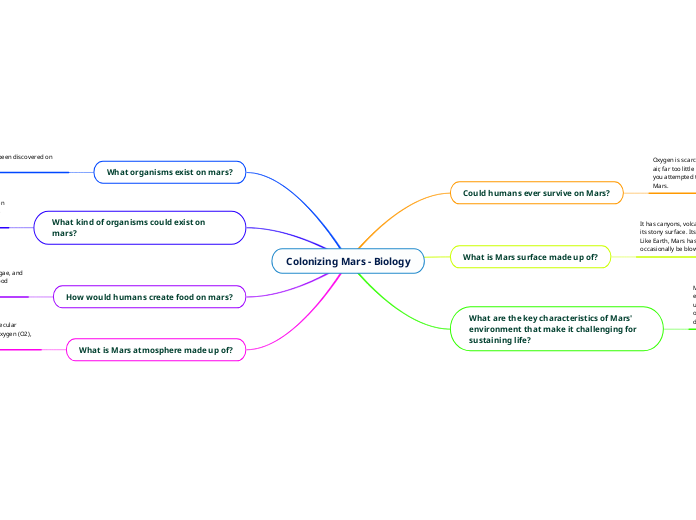Colonizing Mars - Biology
Could humans ever survive on Mars?
Oxygen is scarce on Mars, making up only 0.1 percent of the air, far too little for humans to exist. You would instantly die if you attempted to breathe without a spacesuit on the surface of Mars.
What is Mars surface made up of?
It has canyons, volcanoes, dried lake beds, and craters all over its stony surface. Its surface is mostly covered with red dust. Like Earth, Mars has wind and clouds. Red dust can occasionally be blown by the wind into a dust storm.
What are the key characteristics of Mars' environment that make it challenging for sustaining life?
Mars is usually not a good place for life as we know it to be. For example, the Martian surface is constantly exposed to ultraviolet (UV) solar radiation since there is no protective ozone layer and winter temperatures can drop below -100 degrees Celsius.
What organisms exist on mars?
No evidence of past or present life has been discovered on Mars as of yet.
What kind of organisms could exist on mars?
According to a recent study, the air on Mars is so thin that even some of the simplest and oldest species on Earth may survive there.
How would humans create food on mars?
On Mars, cyanobacteria, often known as blue-green algae, and water gathered from the soil would form the base of food systems.
What is cyanobacteria?
Living in water, means that cyanobacteria can produce their own food. Since they are bacteria, they are typically single-celled and fairly small, yet they frequently form colonies that are large enough to be seen.
What is Mars atmosphere made up of?
95% by volume of carbon dioxide (CO2), 2.6% molecular nitrogen (N2), 1.9% argon (Ar), 0.16% molecular oxygen (O2), and 0.06% carbon monoxide (CO).
